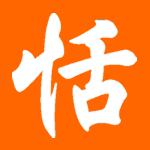Solution 1. Usually in Microsoft Windows 2000 and XP, there is a setting under “Regional and Language Options” in the “Control Panel”, that would install additional components for East Asian languages.
Control Panel > Regional and Language Options > Language (tab) > Install files for East Asian Languages (checkbox)
Solution 2. Download and install the language pack(s) directly from Microsoft’s website.
Office XP Tool: Global IME (Simplified Chinese)
Use the Microsoft Global Input Method Editor for Office XP (Simplified Chinese) to input Simplified Chinese text in your documents, worksheets, presentations, mail messages, publications, and Web pages.
Use the Microsoft Global Input Method Editor for Office XP (Traditional Chinese) to input Traditional Chinese text in your documents, worksheets, presentations, mail messages, publications, and Web pages.
The Traditional Chinese Language Pack installs Traditional Chinese language support files for the operating system.
Office XP Tool: Simplified Chinese Language Pack
The Simplified Chinese Language Pack installs Simplified Chinese language support files for the operating system.


Good lord! What century are we in, Microsoft?! I had no idea they didn't have Unicode support by default... I mean, why wouldn't they?! Other operating systems have been doing this for years. It's a standard FFS!
ReplyDeleteI could understand patchy support in the less popular corners of Unicode (I myself do a lot of academic work in the range U16A0-16FF - try getting decent support for runes!) but these are characters used my a sizeable proportion of the world's population! Unbelievable.
Poor Windows users. As if they didn't have enough to put up with already.
Tian, actually what I've found that is more irritating is that from time to time I can't read Chinese e-mails with Hotmail! I don't have that problem with Yahoo but Hotmail always gives me a hard time. I much prefer my friends to send their Chinese e-mails to my Yahoo address.
ReplyDeleteI guess I can blame Microsoft again!
Marcus, IE, Netscape and Firefox have unicode support but not by default. And only if I can afford to buy a Mac at around the same price as I would pay for a PC, I will get a Mac, too!
If you're running a Red Hat Linux system (or a system based on RH, such as Fedora Core), there are a variety of font packs that can be installed.
ReplyDeleteYou'll probably want at least:
ttfonts-zh_CN
ttfonts-zh_TW
ttfonts-ja
If you want Korean, ttfonts-ko
There are Indic fonts as well, e.g. Hindi, Punjabi, Tamil, etc.
Although I am utterly clueless about Hanzi/Kanji, this site is a fun read nonetheless!
Actually, if anyone has any info on getting Chinese input to not suck under Linux - or, in fact, even to work at all - I'd be much obliged. I've seen the HOWTOs out there, but not actually used them, since they seem to be dealing with input methods developed c. 1997.
ReplyDeletemarcus: The Windows NT line (which includes NT 4, 2000, XP, and 2003) has always had Unicode support by default. You're confusing Unicode with fonts. It doesn't install Chinese fonts by default because they're big and the normal English user will never need to use them. These fonts are of course installed in the Chinese and other East Asian versions of Windows though. All other operating systems have been the same way as well.
ReplyDelete-Claw
And the good news for Mac users is that OS X has had CJK display and input support built-in for years, so it's not even an issue.
ReplyDeleteIf you're using Fedora Core 3, everything should support UTF-8. Just make sure you have the appropriate fonts installed. Here's a list of the TureType fonts that I have installed, and most of the characters on this site appear to work.
ReplyDeletettfonts-ja-1.2-36.FC3.0
ttfonts-zh_CN-2.14-10
ttfonts-gu-1.6-1
ttfonts-ta-1.6-1
ttfonts-bn-1.6-1
ttfonts-ko-1.0.11-32.2
ttfonts-zh_TW-2.11-28
ttfonts-hi-1.6-1
And OS X comes with multiple VERY nice fonts for display of CJK languages.. as well as most others. Truly a beautiful thing. The input system doesn't hurt either, but I'll be glad once the Inkwell technology kicks in for Chinese!
ReplyDeleteThanks, Anton. Do you know anything about Chinese input? I've seen it used under Linux, but what I saw was a painfully primitive system, and I haven't been able to find whether or not there's anything better yet.
ReplyDeleteBrendan - try scim. I've just installed it on my Kanotix (Debian-based) system, and with the settings here: http://lists.freedesktop.org/archives/scim/2004-July/000467.html I got it all up and running. Seems picky about what applications it works in, but so far it works fine at least in gedit, in simplified and traditional.
ReplyDeleteDoes somebody know how to display and enter chinese in a linux terminal?
ReplyDelete